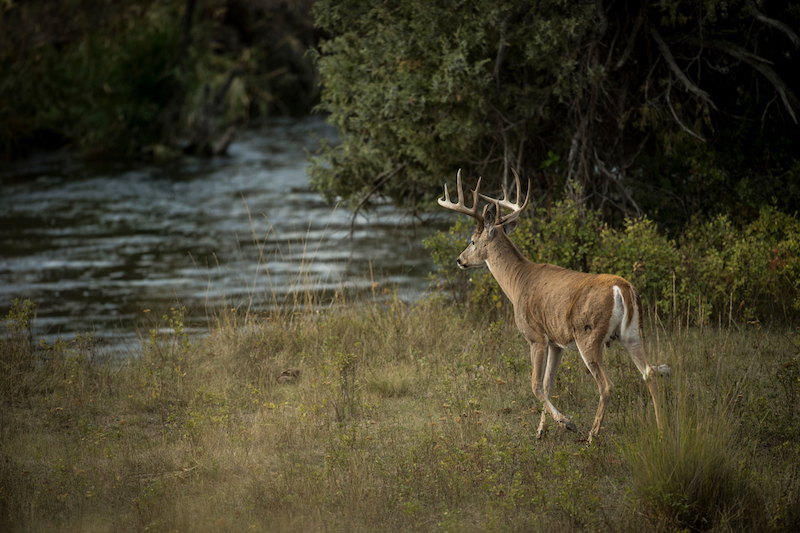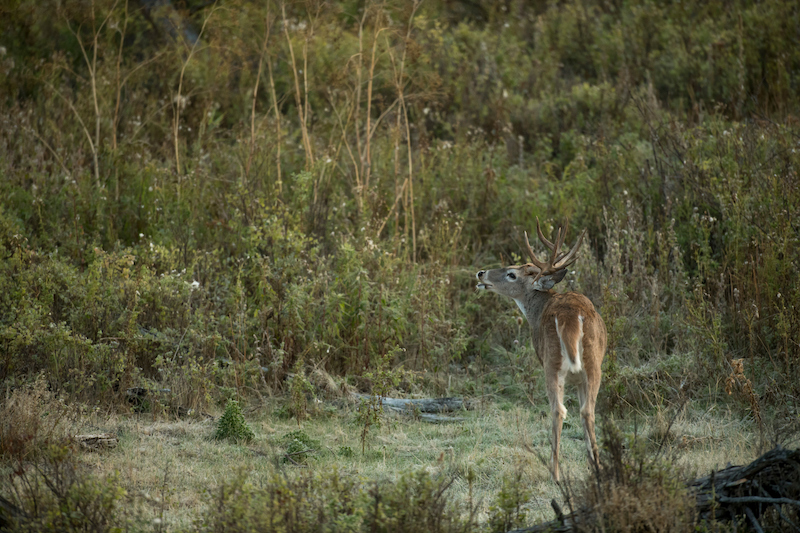Few things compare to the satisfaction bowhunters feel after reading deer sign, picking a stand site, and arrowing a doe or buck. To consistently put venison in your freezer, you must master a few proven hunting tactics.

A prime location is one that has food, cover, and water in one place. Photo Credit: John Hafner
Food, cover and water are the building blocks of productive deer habitat. Top hunting sites have all three. Corn and soybeans are good food sources in agricultural areas, but acorns and woody browse are staples across much of whitetail country. Ideal bedding cover changes seasonally, but you can identify these sites by scouting before and during the hunting season. Don’t overlook water sources, especially those in out-of-the-way locations. A low area along a field edge or a pool dammed by beavers might not look impressive, but if they’re secluded they’ll attract thirsty deer in daylight.
Whether it’s rubs, scrapes or game trails, deer leave lots of sign to decipher. It’s important to differentiate fresh sign from the rest to ensure you set up where deer are hanging out. A scrape, for example, might be active from early September until late November. If you find one that’s hit regularly, with its dirt stained by urine and moist pellets, you know deer aren’t far away. Likewise, rub trees ringed by shavings and game trails pocked with fresh tracks also indicate nearby deer.

Stay downwind of the deer and listen for their calls. Photo Credit: John Hafner
A deer’s nose is its go-to defense. Whitetails base their moves by checking the wind. If dangerous scents reach their nostrils, they’ll head elsewhere. You can beat their nose and their alarm snorts by setting up downwind from where you expect them to move. For example, in northerly winds, try setting up on the south side of an east-to-west trail bordering the south side of a bedding area. If the bedding area is north of the trail, most deer will filter out upwind of you.
Top hunting sites offer easy access so you can sneak in and out without alerting nearby deer. Cover, terrain and wind direction factor into effective access. You must stay out of sight, and make sure your scent blows away from the deer’s suspected bedding sites. Creeks, cornfields, rolling hills or waterways that provide canoe or kayak access can hide your approach.
Deer hunting has no absolutes, but certain locations often produce year after year. A few examples come to mind:
Hunting tactics are always evolving, which means you’ll find few right or wrong ways to bowhunt. What works great for friends might not work for you. Remember, your hunting priority is to simply have fun. By testing and experimenting, you’ll grow as a bowhunter and develop a niche from your preferred tactics. Soon after that, you’ll consistently fill your freezer.